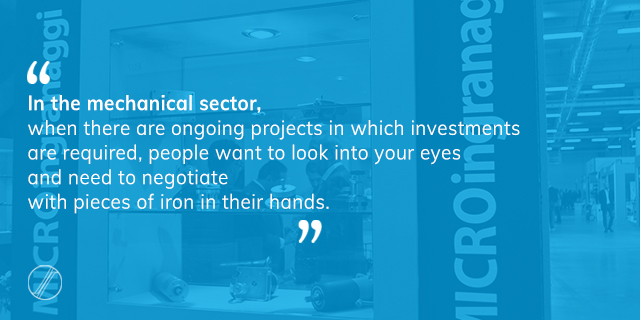In last week’s post we discussed quality control and, in particular, we wondered if it was better to invest in specific purpose equipment or flexible use equipment, concluding that, when it comes to quality control, you should never have to compromise, and that therefore it would be better to opt for specific purpose equipment. It’s a slightly different matter in the case of tool machines.
In general the philosophy may be the same, however, there is one consideration to bear in mind.
With reference to tool machines, the risk resulting from the choice of flexible equipment could be that – not having the specialisation of a specific purpose machine – this machine might be slower and thus also production. The fact, however, that a piece of equipment is slower does not mean that it is not equally precise and that therefore it doesn’t create the workpiece under tolerance, quite the opposite! Most of the time it is precisely the fact of not having to move the workpiece from one machine to another that enables us to achieve greater precision.
The disadvantage of choosing a flexible machine would thus be merely of increasing the production time. But is this really such a crucial increase? It depends. Producing a piece more slowly can have a significant impact if this piece is part of a large series but not if it forms part of a small series or of prototypes (in the latter case there are barely any timing differences). That’s why every assessment must always be calibrated on the basis of the actual activity and related operational cases.
A classic example of a flexible machine tool is that of the multitasking machine. For almost a year now we have had installed in our workshop an NTX 1000 by DMG Mori, flexible equipment par excellence.
I wrote about this choice some time ago:
“Today, multitasking machines are very advanced: they are faster, more accurate and are becoming more suitable for machining of larger scale series (let’s say of medium size) and this means that they are much more competitive than in the past“.
Added to this are other advantages. The first, as mentioned, is to achieve greater accuracy given by the fact of being able to machine the workpiece in a single clamp. Secondly we would have a reduction in the related costs from the perspective both of energy consumption and the use of personnel, to which is added the reduction of space in the workshop.
The fact of being able to rely on a flexible machine will allow us, in case of working emergencies, to decide to use that machine for different types of processing depending on requirements.
Having presented all these considerations, however, each business must make its particular assessments based on its own experience and relevant activities. What do you think? Where a choice must necessarily be made, would it be better to invest in a specific purpose machine or in a flexible use machine?
As this year draws to a close, I would finally take this opportunity to wish everyone a Merry Christmas and a peaceful 2017!





